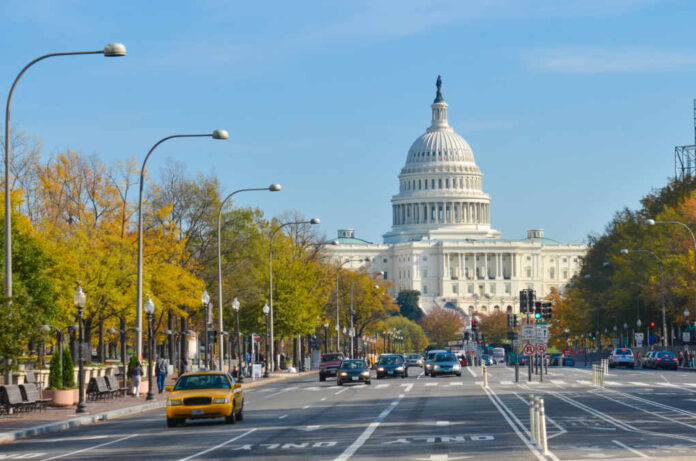
The longest government shutdown in U.S. history has created an unprecedented crisis of economic transparency, with the White House announcing that critical October inflation and jobs data may never be released.
Story Highlights
- Historic government shutdown prevents release of October inflation report for first time ever
- Federal Reserve forced to make monetary policy decisions “driving in the fog” without critical data
- Democrats blamed for shutdown that keeps Americans in the dark about economic conditions
- Bureau of Labor Statistics unable to deploy surveyors, creating permanent gaps in economic records
- Private sector data shows concerning trends with October layoffs hitting 22-year highs
Unprecedented Economic Data Blackout Emerges
The government shutdown that began October 1, 2025, has evolved into an unprecedented economic transparency crisis. White House Press Secretary Karoline Leavitt confirmed that Democrats choosing to keep the government closed will likely result in no October inflation report being published. This represents the first time in U.S. history that the October Consumer Price Index report may not be released, depriving Americans of critical information about the true state of inflation affecting their daily lives.
The Bureau of Labor Statistics has paused all active data collection activities, with funding lapses preventing surveyors from deploying to the field. Multiple essential economic reports remain delayed, including October jobs data, Gross Domestic Product figures, and the Personal Consumption Expenditures index that the Federal Reserve relies on for monetary policy decisions. This systematic withholding of economic information represents a dangerous precedent that undermines government accountability to the American people.
Watch: White House Says October Eco Data Likely Won’t Be Released
Federal Reserve Operates Blindfolded During Critical Economic Period
Federal Reserve Chair Jerome Powell described the current situation as “driving in the fog,” acknowledging the Fed’s severely constrained ability to make informed interest rate decisions. This data blackout occurs during what economists describe as a potential economic inflection point, when the economy may be transitioning from growth to slower growth or recession. Without access to current employment and inflation data, the Fed cannot effectively fulfill its dual mandate of price stability and maximum employment, potentially putting American families at greater economic risk.
White House says October jobs and inflation data may never be released – jobs and inflation data should be tracked by an AI agent and published continuously in real time; why are humans involved? #WhiteHouse #POTUS #CNBChttps://t.co/8MqBC6fNzq
— DesertTalk (@DesertTalk) November 13, 2025
Americans Bear the Cost of Political Gridlock
The shutdown’s impact extends far beyond Washington bureaucracy, directly harming working American families. Furloughed federal workers face missed paychecks, affecting their ability to pay mortgages and other obligations, which slows economic activity across communities with high concentrations of federal employees. Consumer confidence data reveals that people remain anxious about job situations, yet they cannot access the official unemployment insurance data that would normally provide clarity about labor market conditions.
Private sector data provides some concerning insights that official government statistics would normally clarify. ADP reported that the private sector added only 42,000 jobs in October, while layoffs hit their highest level for the month in 22 years, with companies citing cost-cutting and AI implementation as primary reasons. Without comprehensive government data, Americans cannot fully understand whether these trends represent temporary adjustments or signs of broader economic deterioration that requires immediate policy responses.
Sources:
Government shutdown delays October jobs report: When economic reports released after shutdown ends – Fox Business
Government Shutdown Clock – The White House

























